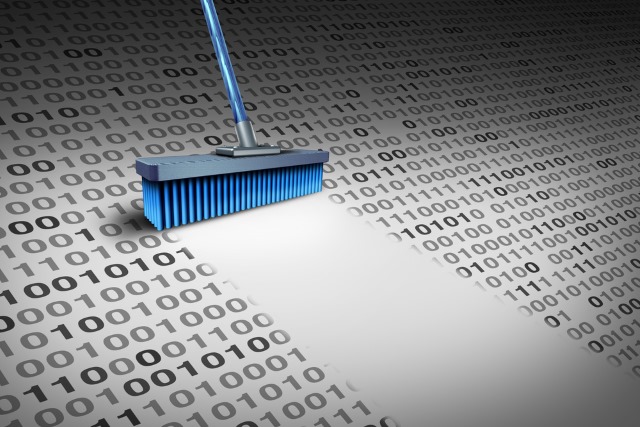The idea that once something is online, it’s there to haunt you forever seems to be buried in our conscience. The good news is that your digital footprint isn’t immortal and immutable. Technology experts have shared with us a couple of tactics that can help us keep our digital identity just the way we want it.
Even as institutions are trying to establish a transparent process with the installment of the GDPR rules, social networks have evolved so much that they’re now possessing information on everything that concerns us from our friends and families to the things that we eat and the party we fancy.
Why you need to have a clean online persona
Even if social platforms now allow us to share all sorts of personal information and are even able to gather the shadiest sides of our personalities, there are some moments in life when clearing up our internet image is essential, like when you’re applying for a new job, for example.
Nowadays, most employers will try to find and evaluate your social media presence to discover if you fit the profile of the ideal candidate.
A misjudged tweet from years ago or an inappropriate Facebook photo can destroy future job prospects or ruin a career. A Google search that reveals an old conviction can make it more difficult to become hired, and – whether true or not – allegations of criminal conduct spread online can cause misery.
Myspace
Maybe some of you have even forgotten about the days when we used to think MySpace was cool, but the reason why it’s on this list is because MySpace is the most recent company to screw up.
Just this week, it lost more than a decade of music files users had uploaded starting in the early 2000s. Unfortunately, MySpace doesn’t exactly make it easy to get your stuff from that account you probably haven’t touched in years.
According to the information on the MySpace help site, there’s no way to download all of your photos at one time, so you’ll have to go through and save them one-by-one.
You can download your songs and videos by going to the uploads page, finding the media you want to pull down, and clicking the pencil icon to get to the download menu.
As you probably already know, Facebook is a platform that compiles data about users in the most comprehensive way. Actually, there’s so much data about each user that the company splits up the downloads into sections and logs to make viewing it more manageable.
If you follow this link, you’ll find links to activity logs that collect various types of Facebook activities into a single stream. So, if you want to see every status update you’ve ever made, you just click on that link.
If you want to download an archive of everything you’ve ever done on Facebook, you can do that too.
Another Facebook setting that might interest you in the one on this page. And if you click this link it will show you a map of places you have been.
Not to be outdone by Apple, this week Google also revamped the way in which users can interact with and download their personal data.
If you go to the My Activity page, you will see just about everything you have done using Google products. That means that you’ll most likely be overwhelmed by the sheer volume of entries on that page. It likely includes every search you’ve requested, every time you’ve used Google Maps, all of the YouTube videos you’ve watched, and smart home functions you’ve done via app or a Google Assistant speaker.
You can even listen to your Google Assistant voice requests.
If you want to delete this activity, you can do so by going to this page and selecting the dates you want to delete or choose by service. So, if you want to make every questionable Youtube search disappear, the good news is that you can do it.
Apple
Just this week, Apple gave U.S. users the ability to download their personal data, which makes sense after Tim Cook’s speech concerning privacy.
Apple is primarily a hardware company, so it doesn’t rely as heavily on collecting user data to make money. As a result, you might find that your Apple data isn’t anything too surprising.
If you want to check it out, go to the Data and Privacy page and log in. While you’re there, you can also double check some of your privacy settings and make sure you’re comfortable with everything that’s around there.
Snapchat
If you’re still using Snapchat (or you stopped, but want to know what information the company has about you), you can visit this page and submit a request. It will take a while for the company to make your data available for you and send a zip file (usually a couple hours) and then you get a link from which you can download it.
Some personal data like your device history is located at this page if you want to see it without the download.
To grab your Twitter archive, head into the account settings page and navigate to the “Download your data” section. Like with Snapchat, Twitter will gather up your info into a zip file and send you a link for downloading. You’ll need to have a confirmed email address if you want to go through with the process.
The big takeaway from all of this data is to keep an eye on your privacy settings when you use apps and sites. It’s still a maze of permissions and privacy agreements, but it’s actually easier now than it ever has been thanks to reforms like GDPR. Be vigilant.




